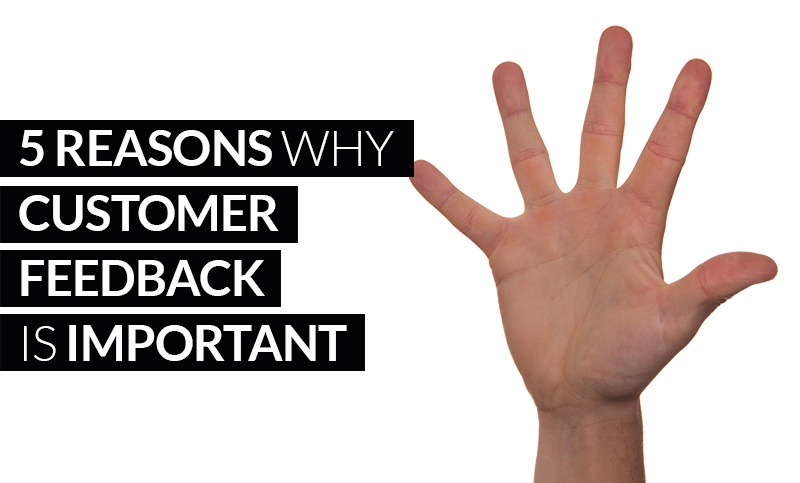What is customer feedback?
Customer feedback is information provided by customers about a business, after using their products or services, or about their general experience in dealing with that business. That customer information reviews their buying experience and can relate to any part of their customer journey such as ordering system, dealing with staff, pricing, the range of product etc.
Feedback data from customers can be collected in different ways. Businesses can actively gather feedback through survey questionnaires, Net Promoter Score surveys and other ways of directly asking the customer to provide the information. Feedback can also be unsolicited - collected through business’ own or third-party channels - social media (Facebook, Google+) or review sites and directories (TripAdvisor, Google, Yelp). To find out more about collecting customer feedback and taking action on the data you receive, download our guide here.
Measure customer satisfaction
Running a business without collecting feedback and objectively measuring customer satisfaction can be like driving a car with a blindfold. Ideally, a business would provide the perfect products their customers need, wrapped up in a great buying experience and resulting in customer loyalty and repeat business. Customer satisfaction is the delineation between a business breaking even and growing.
- “Loyal customers are 5x as likely to repurchase, 5x as likely to forgive, 4x as likely to refer and 7x as likely to try a new offering.” - Temkin Group
Collecting and analysing customer feedback makes it easy to measure customer satisfaction. Using a NPS platform enables businesses to put a clear metric against their customers’ experiences. But, while an NPS snapshot is useful, the real value of a CX metric like NPS is in seeing how the Net Promoter Score trends over time. This is a clear indicator if the organisation is moving in the right direction in terms of customer satisfaction. For instance, a low NPS score (eg. 25) which is steadily increasing over time would be preferred over a good NPS score (eg. 70) which is dropping sharply over a time period.
Knowing what the CX score is, and whether it is increasing or decreasing, allows businesses to make changes and adjust to ensure that their customers are happy.
Grow sales and retention
Listening to and acting on customer feedback has a direct effect on the business bottom line by operating three important levers - decreasing customer churn, converting passive customers and increasing customer advocacy.
Most unhappy customers just leave. In fact, 96% of dissatisfied customers don’t complain. For every complaint, there are potentially 25 other customers that haven’t complained. Being aware of customer issues and working quickly to fix them is the easy path to converting an unhappy customer to a happy one. Letting customers know that their feedback is listened to and that the business is doing something about their concerns is most often enough to turn their experience around into a positive one.
Great customer experiences help turn people into promoters of a business - customer advocates who spread positive word of mouth which helps grow business.
- “People are 4x more likely to buy when they are referred by a friend, and referrals have a 16% higher lifetime value.”
Passive customers are easily swayed by competitor offers and don’t have strong loyalty to a business. Being aware of their feedback helps to know what triggers they respond to, for example discount offers. Offering passive customers more of what they want helps prevent churn and increase revenue.
Improve your products and services
Customer insights into what is and what isn’t working well about a company’s offerings are the most valuable data a business can receive - showing what customers are willing to buy and what can be improved. The customer expectations do evolve over time and feedback helps to keep abreast of those changes, just because a product launched 10 years ago was a great market fit then, doesn't mean that it still is today.
Feedback is also a sure way of identifying issues around quality control. Large food and hospitality chains all over the world use customer feedback to make sure that all of their locations and franchises are providing services to the standard that their brand expects. This is often an easy way to identify training opportunities.
Provide great experiences, build a customer-centric culture
Customer-centric companies are 60% more profitable compared to companies that are not focused on the customer. The more a business focuses on not just great service, but also other elements of customer experience, such as product range, value, convenience, personalisation, the more likely it is to retain customers and grow revenue.
Also, companies not sharing this focus are likely to retain less staff due to anything from dealing with angry customer calls to serious downturns in business. Employee churn has its own related costs quantifiable in cost recruitment, onboarding and training time and other related costs to business.
To embed customer feedback into regular business operations and aid customer-centricity here are some easy strategies:
Sharing customer feedback with the wider team: making feedback reports visible throughout the organisation and correlating positive uplift in revenue with any increases in feedback metrics. Showing recent and longer-term trends in NPS metric with a view of milestones and changes in the business which have caused the metric to improve. This can be in the form of day-to-day individual feedback or monthly published report, depending on what is right for the business, highlighting to the organisation that value is placed on great customer satisfaction, leading to greater customer retention.
Add feedback scores to individual and team KPIs: creating healthy competition inside the teams focused on a unifying goal will benefit your customers. Acknowledging standout results with CX awards, great customer comments and highlight feedback within the organisation also supports customer-centricity in the company culture.
Gain business insights
Using smart Net Promoter feedback allows the segmentation of feedback data into insights belonging separately to promoters, passives and detractors. This segmentation enables opportunities for different sets of customers. Companies can then focus on different parts of their business in order to optimise different business goals.
Promoters - Seeing what is trending with your promoters enables doing more of the things that customers love. 73% of consumers say friendly customer service representatives can make them fall in love with a brand. This is why a lot of promoter feedback shows comments about excellent customer service, positive team members, helpful and friendly staff.
Passives - Feedback from passive customers can help identify the difference between good and great experiences. Anecdotal evidence such as ‘the service was good but...’ can show what changes are required to turn up the dial and keep the customers coming back more often.
Detractors - Unhappy customers will point directly at the issues which are critical to them inside the business. They have felt strongly enough to send a clear signal about what bothers them - changing these will plug future ‘leaks in the bucket’.
66% of consumers who switched brands did so because of poor service - issues that trend with detractors are most often linked to poor communication, long wait times, bad store experiences and issues around value and pricing.
Managing a growing business and evolving means listening to the voice of customers. Not only collecting the feedback but also acting on it and improving continuously. Customers are the ones using the end products and services and are in the best position to give their unsolicited feedback. These insights help to improve all different facets of a company, from product development to customer service to dispatch. Staying in touch with customers allows businesses to measure customer satisfaction and manage loyalty, promoting loyalty and preventing churn.
Click here to download the free Definitive Guide to Customer Feedback Methods










